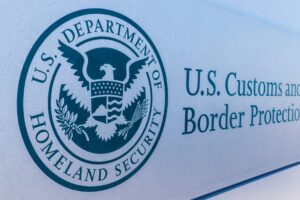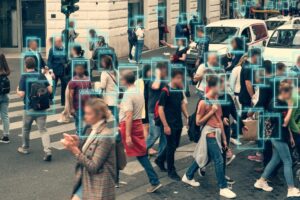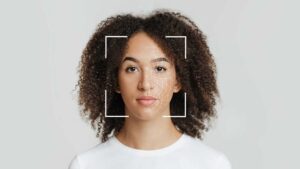

The New Orleans Police Department (NOPD) is pressing the City Council to roll back restrictions on facial recognition technology in the name of public safety, igniting a fierce battle over privacy, civil liberties, and police transparency.
Police Superintendent Anne Kirkpatrick appeared before the City Council’s Criminal Justice Committee this week with a clear message: her department needs access to real-time facial recognition alerts from Project NOLA, a private camera network that operates more than 5,000 surveillance cameras citywide.
“We have seen the benefit of a real-time immediate alert. Everybody has been able to see the benefit,” Kirkpatrick told council members, referencing recent incidents like the January 1 terrorist attack on Bourbon Street and the May 16 escape of ten inmates from Orleans Parish Jail, during which one suspect was tracked using facial recognition by Project NOLA.
Kirkpatrick suspended NOPD’s use of these alerts in April after concluding they likely violated a 2022 ordinance that prohibits the department from employing facial recognition technologies. Despite the ban, Louisiana State Police and federal agencies continue receiving alerts from the system, creating what Kirkpatrick calls a “double standard” that hampers city law enforcement.
Public debate over the issue escalated in May when The Washington Post revealed that NOPD had quietly been receiving real-time alerts from Project NOLA. These alerts reportedly continued for years, unbeknownst to the public and without formal documentation by NOPD in apparent violation of the city’s own laws.
Project NOLA, a nonprofit run by former NOPD officer Bryan Lagarde, claims its cameras can identify faces from up to 700 feet away. Internal records and screenshots shared by local journalists show alerts sent directly to NOPD officers as recently as 2024, contradicting public claims by NOPD that they maintain zero records of facial recognition use.
“The evidence is undeniable,” one local advocate said in a June petition drive opposing expanded use. “Project NOLA is sharing facial recognition data with NOPD without accountability, oversight, or records.”
Rather than distance herself from the technology, Kirkpatrick has gone on offense. She floated plans to create a city-run facial recognition network that is legally sanctioned and fully under municipal control. A new city-owned system, Kirkpatrick argued, would offer safeguards lacking in private setups.
Only with its own system can legal compliance, privacy protections, and effective use be ensured, she said.
Her assurances include support for provisions barring the use of facial recognition as sole evidence for an arrest, and limitations to only use the technology for criminal investigations and missing persons cases.
“Neither Project NOLA nor the NOPD has provided any credible, independent evidence that their facial recognition system is accurate, fair, or effective for video surveillance,” said Tom Bowman, a researcher with the Center for Democracy and Technology. “No publicly available logs show how often matches were made, how often they were wrongly made, and how often they resulted in errant arrests, investigations, or uses of force. As a result, there is little to no reliable information regarding the testing, accuracy and bias of the facial recognition system being used.”
A draft ordinance to authorize facial recognition use was quietly pulled from the New Orleans City Council’s regular agenda in June after backlash from civil rights groups including the American Civil Liberties Union (ACLU) of Louisiana and Eye on Surveillance.
Civil rights advocates fear similar mission creep in New Orleans. “We cannot ignore the real possibility of this tool being weaponized against marginalized communities, especially immigrants, activists, and others whose only crime is speaking out or challenging government policies,” said Alanah Odoms, Executive Director of the ACLU of Louisiana. “These individuals could be added to Project NOLA’s watchlist without the public’s knowledge, and with no accountability or transparency on the part of the police departments.”
Councilmember Eugene Green said the measure needed to be heard first by the criminal justice committee.
Councilmember Lesli Harris requested a full accounting of NOPD’s historical use of facial recognition, including records from Project NOLA. So far, the department maintains it has none, despite mounting public evidence to the contrary.
Council member Eugene Green said, “We want as much support as possible. We want everyone to understand that we’re not trying to be intrusive, we’re trying to do everything constitutionally and keep our community safe.”
Supporters of facial recognition argue that it functions like an eyewitness. Kirkpatrick compared it to a citizen calling 911 to report seeing a wanted suspect. “How is that different than receiving an alert from facial recognition?” she asked.
As the city awaits a rescheduled hearing on the ordinance, the debate reflects broader national tensions: how to balance public safety, evolving technology, and constitutional rights. For now, NOPD remains in legal limbo. The alerts from Project NOLA are paused. Public confidence is eroded. And the law is murky.
Kirkpatrick continues to push for what she sees as essential modernization, even as civil liberties groups mobilize against it. “I support the technology and will remain in support,” she told the Council. “But I will work with you to build parameters.”

CBP’s biometric border dragnet and the corporate state behind it
U.S. Customs and Border Protection (CBP) is on the verge of reissuing a sweeping regulatory overhaul that will usher in a new nationwide biometric surveillance

New Orleans police seek expanded facial recognition powers amid privacy backlash
New Orleans police seek expanded facial recognition powers amid privacy backlash.

Oloid expands market reach with Armatura partnership, gets DEA certification
Facial authentication provider Oloid has announced a strategic go-to-market partnership with biometric access control and identity management company Armatura. It has also confirmed the certification
© 2025. All rights reserved.